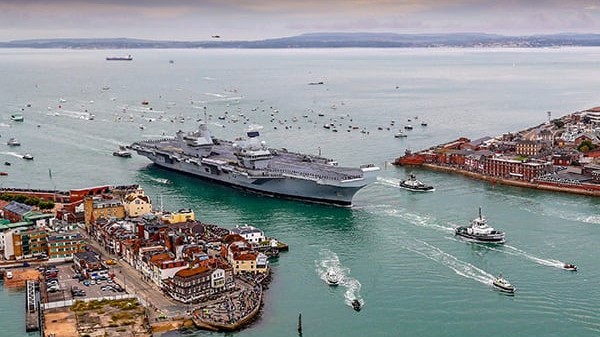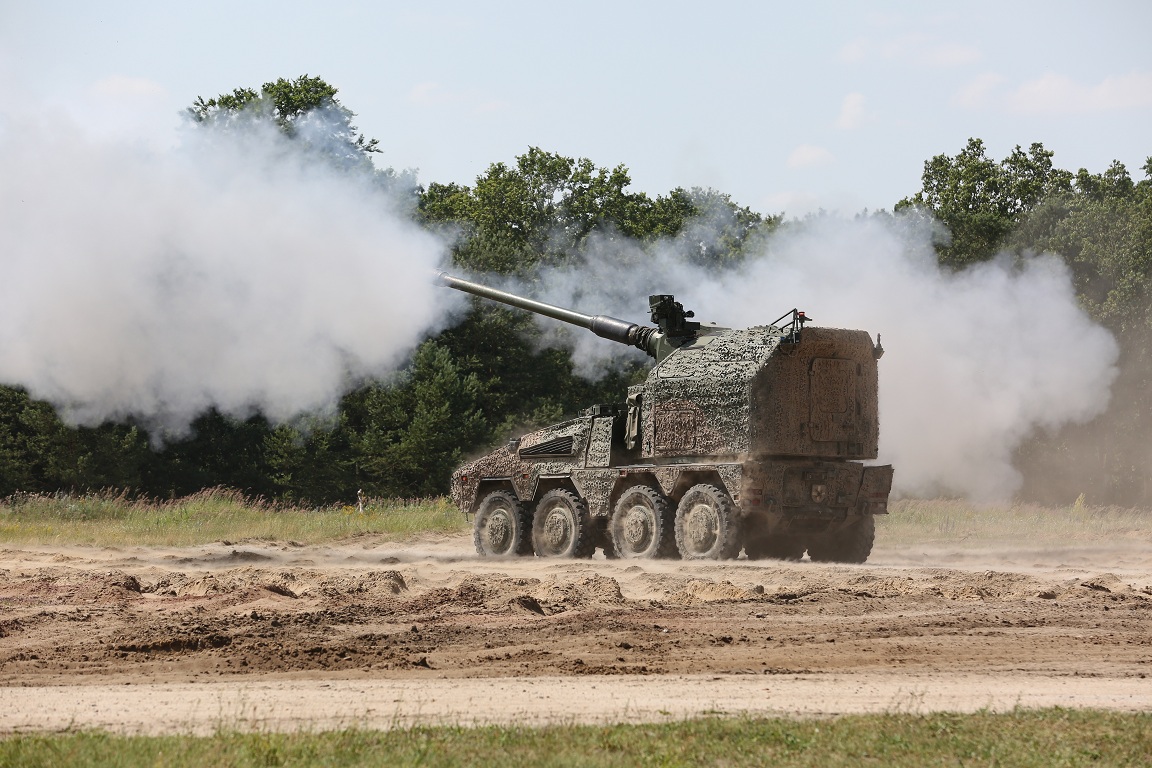Published 23rd May 2019.
The RAF has commenced trials of a new cutting-edge missile decoy device on its Typhoon fighter jets
Share this story
The Royal Air Force has commenced trials of a new cutting-edge missile decoy device on its Typhoon fighter jets.
Speaking at the Typhoon Ministerial Meeting in Germany, Defence Minister Stuart Andrew announced the beginning of a series of capability tests of BriteCloud, a drinks-can sized missile decoy to protect combat jets from the latest radar-guided missiles.
BriteCloud uses powerful radar emissions to disrupt the targeting system within air-to-air and surface-to-air missiles, drawing them away to a safe distance. The device can be fired from an aircraft flare dispenser without the need for modification to the aircraft.
Designed and manufactured in Luton by Leonardo, the miniature decoy has been tested and released for the first time aboard the RAF’s fleet of Typhoon aircraft.The MOD has been working with Leonardo on the development of BriteCloud since 2012 and has so far invested £27m in the system, with the project sustaining 50 jobs in Luton.
“Britecloud offers the RAF a powerful and cost-effective way to keep our pilots safer than ever on the frontline”
Defence Minister Stuart Andrew said: “Britecloud offers the RAF a powerful and cost-effective way to keep our pilots safer than ever on the frontline.
“These trials show UK industry is once again at the heart of defence innovation, providing our Armed Forces with state-of-the-art capabilities and creating high-tech jobs across the country.”
The first Britecould trialwith Typhoon aircraft took place in the UK in April. Thirty three BriteCloud 55 rounds were dispensed from aircraft flown by the RAF’s 41 Test and Evaluation Squadron against a range of threats designed to mirror those faced on the battlefield.
Further trials are planned to ensure the decoy launches safely from the aircraft and to develop a range of operational uses for the technology on the battlefield, including adding the devices to military helicopters and C-130 Hercules aircraft. The Typhoon trials will also inform how such decoys could be used on the RAF’s Lightning stealth jets.
Should the trials be succesful, the devices will be available for frontline aircrews by the end of 2019.
Sir Simon Bollom, CEO of the MOD’s Defence Equipment and Support organisation, said: “Our ongoing partnership with Leonardo continues to drive vital research and development that leads to the kind of innovation demanded by our RAF today. The trials of BriteCloud on Typhoon demonstrates how we are constantly striving to find a technological edge and protect our service personnel.”
Wg Cdr Pete Ward, SO1 Typhoon said: “The initial flight-trial of Bright-cloud from RAF Typhoon aircraft was a key milestone in moving closer towards a viable and extremely valuable capability for the warfighter; trials will now move to operational testing and validation before the initial operating capability is declared, planned at this time for later in 2019”
The MOD invested £4.4bn with industry in in the South-East in 2017/18, sustaining almost 27,000 jobs across the region.











